8 generative AI use cases that businesses should know about

Director of Content
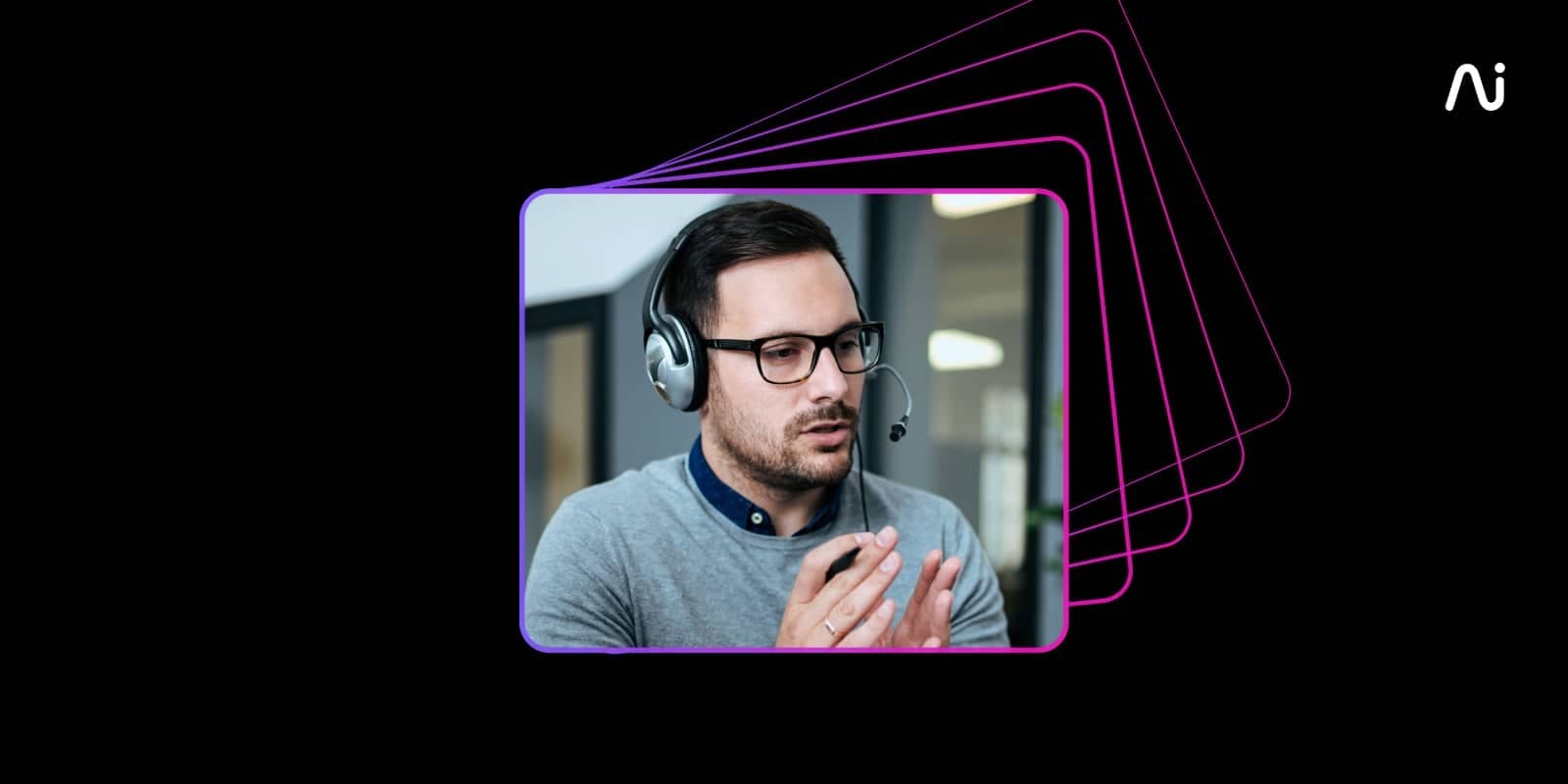
Tags
Share
Whether you’ve tried using the likes of ChatGPT and Bard or not, it’s undeniable that businesses are already looking to generative AI as a way to improve their customer support, sales, and marketing campaigns.
The intoxicating possibilities that generative AI offers businesses go far beyond just automating processes. From spitting out code to coming up with punchy headlines for ads, the good things about AI seem to be limited only to our collective imagination
Working at Dialpad, an AI company itself, my team has a front-row seat to a ton of exciting use cases for generative AI. In this blog, we’ll look at some of the most exciting generative AI examples from real-world businesses today, from healthcare to banking to—of course, contact centers.
What is generative AI?
Generative AI refers to a type of artificial intelligence that can create or produce outputs based on what it has “learned” from whatever dataset you’ve given it. One generative AI example we’re all familiar with, ChatGPT, is often called out for its outputs not being reliable if it’s asked about anything more recent than 2021:
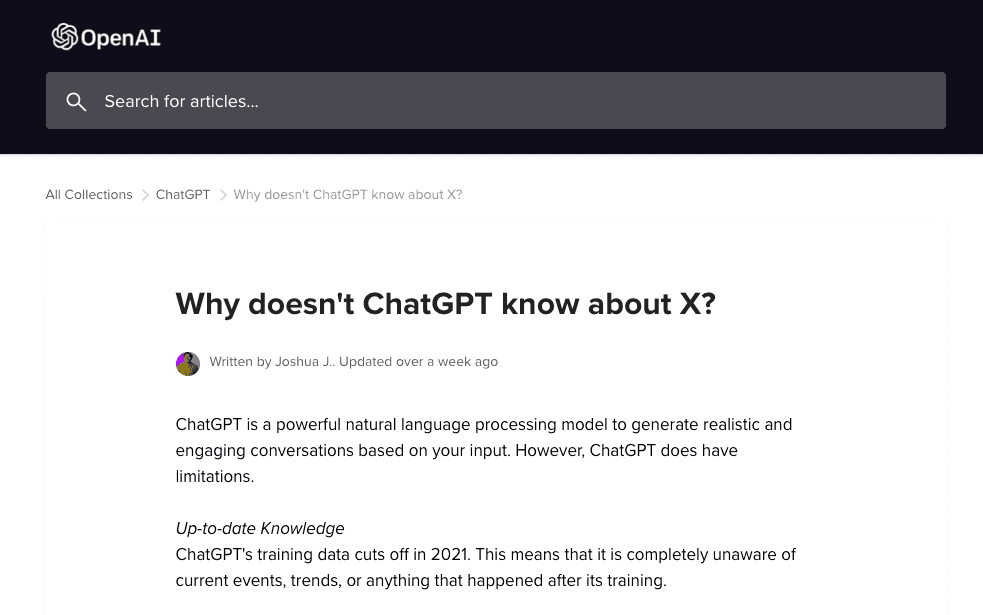
That being said, this is not as big of an issue if you’re using generative AI for, say, purely creative pursuits like writing a funny sonnet or social media post.
8 generative AI use cases that businesses should know about
1. Automated customer support with conversational AI
Perhaps the thing about generative AI that has hooked people the most is its ability to respond to questions in a natural-sounding, friendly way.
If you’ve ever asked Siri about the meaning of life or asked ChatGPT to tell you a story, you’re already familiar with this.
But what if we took this conversational AI ability and applied it to, say, customer support? That’s what we’ve built here at Dialpad with the Ai Virtual Assistant. Not only can it understand a wide range of questions that are worded in different ways, it can also pull answers automatically from all connected knowledge sources (even unstructured sources like PDFs and past customer conversations):
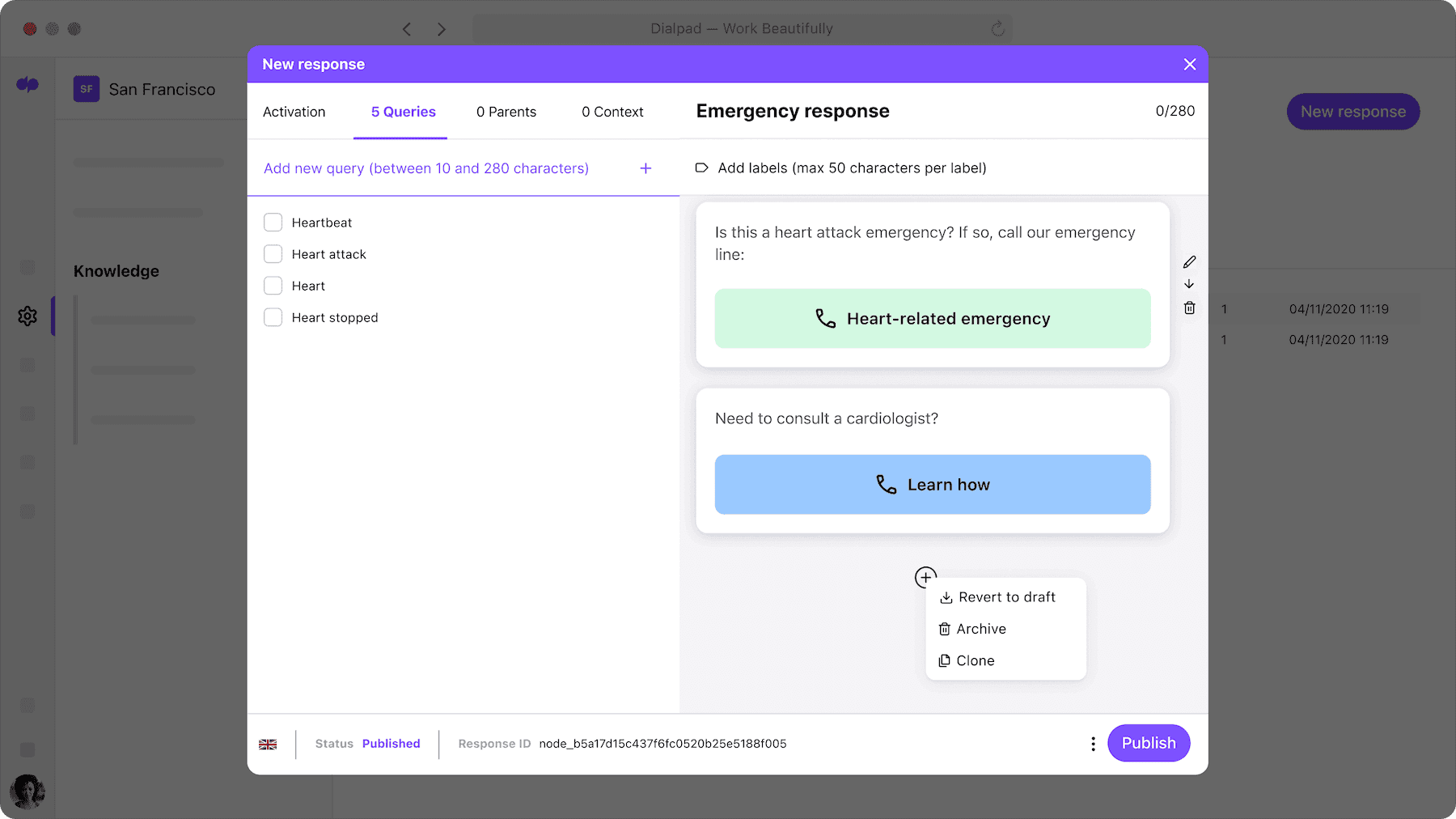
This helps customer support teams reduce response times while making sure customers get their answers quickly, which improves customer satisfaction.
💡 What’s the difference between conversational AI and chatbots?
Think of conversational AI as a much more advanced chatbot. Whereas chatbots traditionally could only answer preset questions with preset answers, conversational AI is far less rigid and can understand intent, even if customers phrase their questions in more creative ways.
These conversational AI platforms can also provide automated customer service 24/7, which means that even when your agents are offline, customers can still get answers to most questions on their own time.
2. Text summarization
Generative AI can also help simplify large amounts of text instantly, so that readers can get to the key points in a fraction of the time.
For example, if you missed an important meeting because of an emergency, it would probably be helpful to have a summary of what happened so you can get caught up quickly.
But today, we don’t really have secretaries or note-takers anymore. (Alas, the Mad Men days are pretty far behind us.)
One of the most popular generative AI use cases right now is summarization, giving you a concise four- or five-sentence recap of what was discussed during a conference call or video meeting.
3. QA for customer support
What if customer service AI tools could analyze the sentiment of your agents’ conversations in real time, and let supervisors know if they need to jump in to help?
Or, what if an insurance call center needed to make sure its agents are always adhering to disclosure statements? AI can help with both by analyzing conversations in real time, recognizing important trigger words, and popping up reminders on agents’ screens to help them talk through challenging topics:
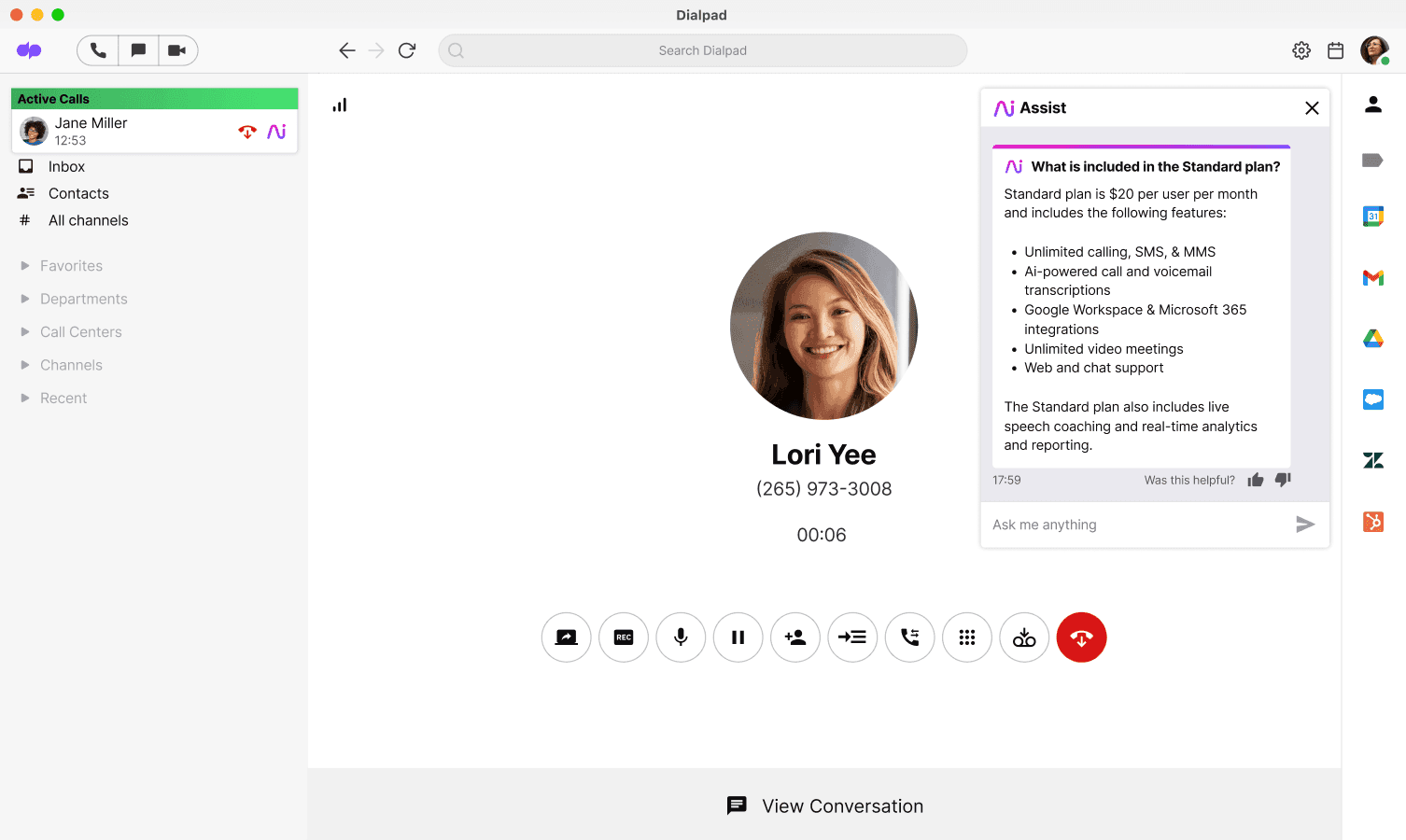
4. Writing code
Generative AI can even code now. I don’t know how to code myself, but there’s no shortage of threads on Reddit from people who’ve used ChatGPT to write code and even create apps for a side hustle:
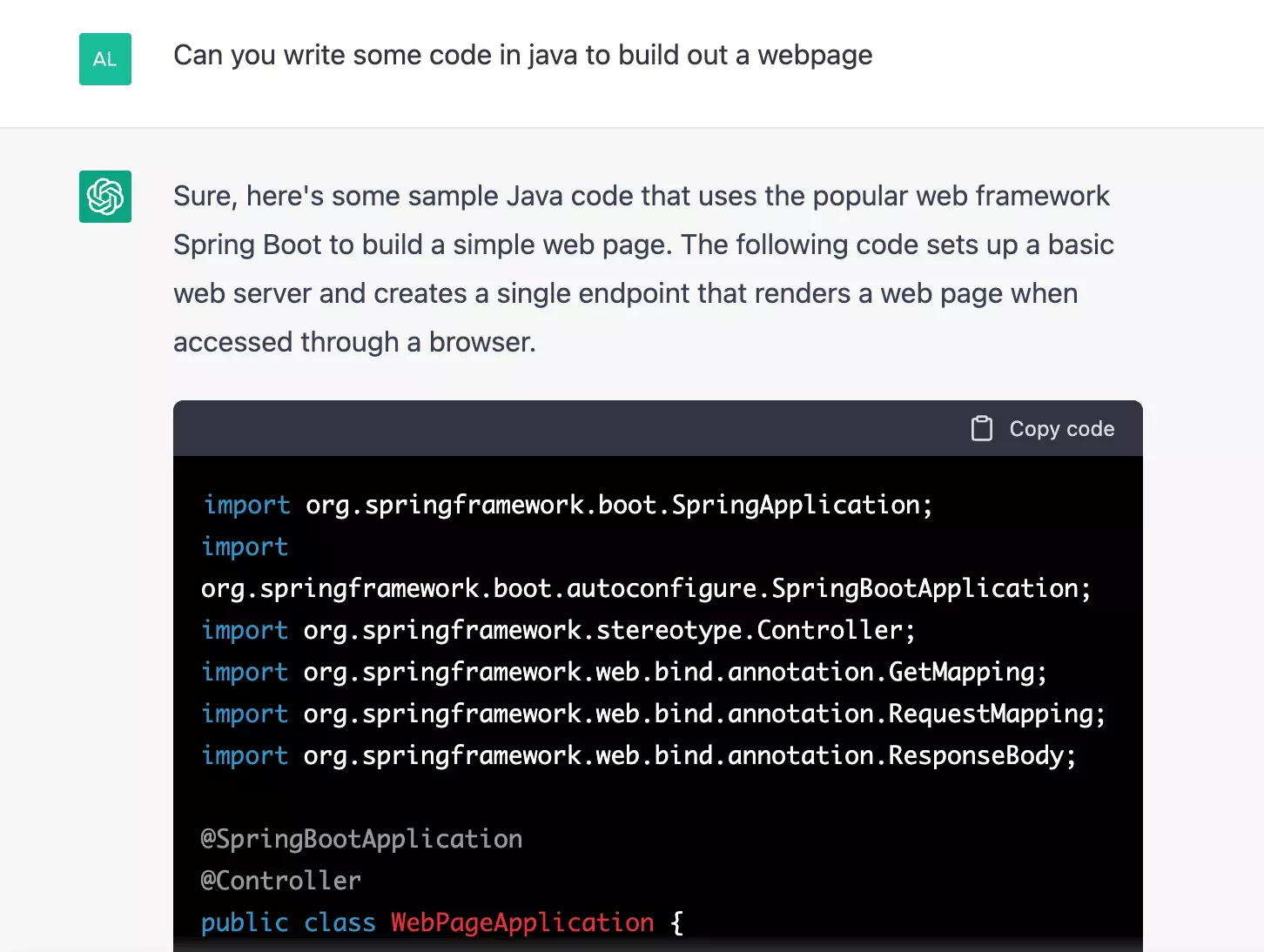
Is the code actually any good? I have no idea, but your friendly neighborhood software engineer might have a better answer than me.
5. Writing content
On a (very) related note, generative AI can also produce marketing content—well, pretty much instantly.
I do use generative AI to help create marketing content, and one thing to note is that it’s nowhere near perfect. It’s hard to capture brand voice, there are often grammatical errors and stylistic inconsistencies, and the AI won’t cite its sources. Those are just a few of the many issues that you’ll find in a piece of content generated by AI that would still require an editor’s eagle eyes.
But generative AI can get you to a rough first draft instantly. If you’re used to working with freelance writers or agencies, then generative AI is a much faster and more cost-effective way to get to an editable rough draft.
6. Video creation
Again, as a marketer, the video creation process is something that we’re painfully aware of. Everyone wants video content, but between scripting, finding an actor, shooting, and post-production work, you can easily spend weeks or months filming a few short videos.
Today, there are many generative AI examples when it comes to video tools that create a life-life avatar (if you need a talking head video) for you.
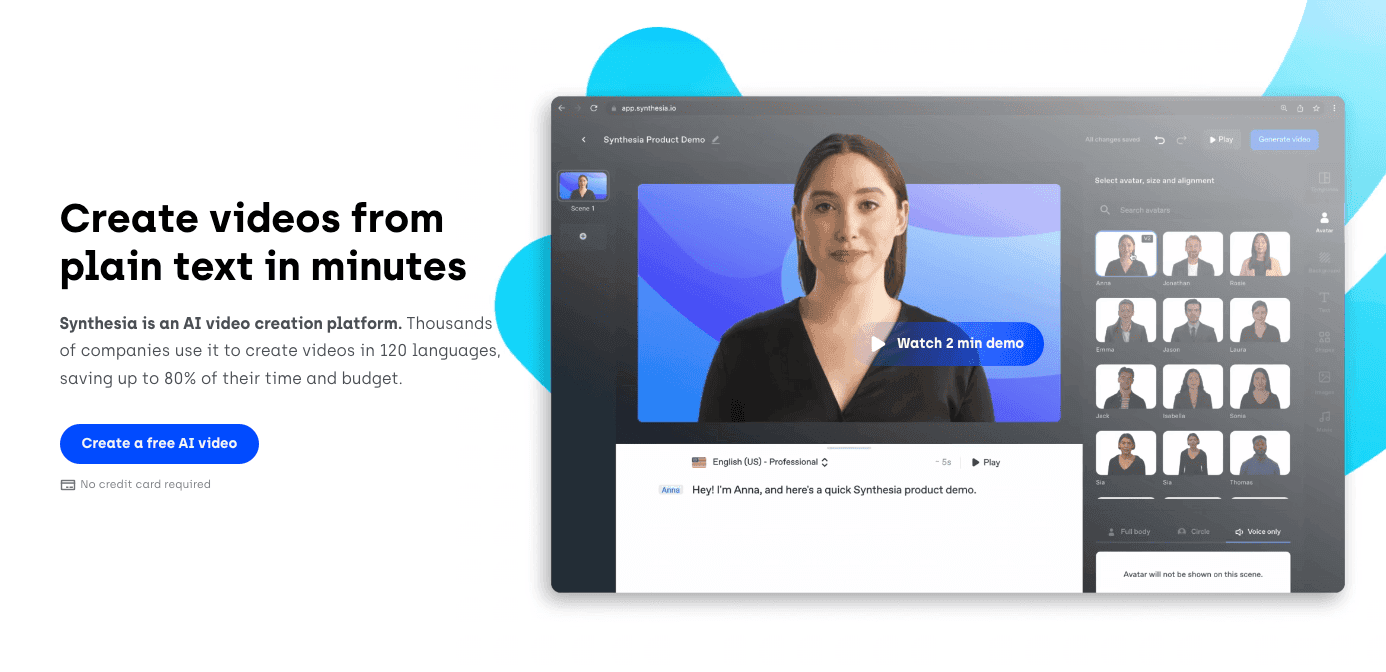
Don’t believe me? Just do a quick search on YouTube and pay close attention to the person or the voice-over. I’ve been seeing more and more videos that were clearly created using AI.
Were those great videos? No, not really. They were obviously low-effort productions, kind of boring, and depending on how bad the avatar or voice-over was, even creepy.
7. Finishing your emails
Didn’t expect to see this here, did you?
But for most of us, generative AI has already been a part of our everyday lives… finishing our emails.
If you’ve ever let Gmail or other writing tools like Grammarly auto-complete a sentence or fix your tone of voice in an email to your boss, then surprise, that’s generative AI at work.
8. Forecasting and predictive analytics
Imagine if you could predict churn reliably, month after month.
What used to take big teams of analysts and experts hours and hours might no longer take much time at all.
There are already revenue intelligence tools using generative AI to predict everything from churn to the likelihood of missing revenue targets—and suggest a plan of action for business leaders.
What are the use cases of generative AI in different industries?
Generative AI use cases in law
Large law firms that receive high call volumes or questions on their websites can use generative AI to deflect and respond to a pretty wide range of client questions.
For example, conversational AI (essentially a more advanced and versatile chatbot) can do things like handle initial client intake, automate appointment scheduling, and connect representatives to helpful internal knowledge sources to provide answers to FAQs and help clients access self-service resources before reaching out to a live representative at the firm.
📚 Further reading:
Learn more about AI use cases in law.
Generative AI use cases in insurance
Like banking, insurance is a generally conservative industry. If we’re thinking of “insurtech” (insurance technology) companies, then those might actually be more enthusiastic about adopting insurance innovation technologies like generative AI compared to insurance firms. (Sort of like how fintech companies are more tech-forward compared to, say, a big national bank.)
And while the dialogue around generative AI use cases in insurance has bee n pretty cautious so far, there is some experimental thinking happening already.
For example, American Family Insurance’s American Family Ventures arm recently wrote about “InsuranceGPT” and a few potential examples of generative AI being used by insurance firms.
Here are two of them:
“A claims assistant that leverages customer and historical claims data to help adjusters adjudicate and handle claims more quickly.”
“A contract analysis tool for reinsurance teams that answers questions about current coverage and streamlines contract negotiations.”
📚 Further reading:
Learn more about AI use cases in insurance.
Generative AI use cases in healthcare
Already, one of the most promising applications of generative AI in healthcare is to help physicians make better-informed decisions about treatment plans and even accelerate the development of medicine.
NVIDIA, for example, has announced generative AI models that can “rapidly identify potential drug molecules—in some cases designing compounds or protein-based therapeutics from scratch.”
These models are trained on large-scale datasets of small molecules, proteins, DNA and RNA sequences, and can “predict the 3D structure of a protein and how well a molecule will dock with a target protein.”
Another key use case is personalized drug discovery. Generative AI algorithms can be used to create tailored treatments based on individual patient needs by analyzing their medical history and current symptoms. This means that treatments are more likely to be successful due to their specificity—and may even reduce costs associated with trial-and-error approaches taken by traditional drug development processes.
Generative AI use cases in banking
Banking—financial services in general, really—is one of the slowest sectors when it comes to adopting new technology, and generative AI is probably not going to be any different.
And it’s not surprising. Usually, the more heavily regulated the industry, the harder it is to jump on the latest fancy trend, especially when it’s not well understood yet or regulated at all.
As Sarah Hinkfuss, a Partner at Bain Capital Ventures, puts it very eloquently, “There’s a reason financial services hasn’t been on the top of the list for generative AI companies: generative AI gives the 90% answer and financial services demands 100% accuracy.”
But, that’s not to say that you can count out financial institutions completely when it comes to generative AI use cases.
For example, AI can detect fraud based on customer data and possible suspicious activities, and it can also help improve the customer experience by providing more personalized services based on individual preferences.
(And these are just a few of the many generative AI examples that Sarah gets into.)
How will your business use generative AI?
Even though it feels like generative AI has exploded in the last few months, we’re still clearly just scratching the surface of what it can do.
There’s layer after layer of possibility, once you get past more general use cases like auto-completing an email. In almost every single industry, we’re seeing more and more examples of generative AI changing the way we work—often, for the better.
See how you could be using Dialpad Ai
If you have a customer support or revenue team that could use more real-time insights and assistance for agents, then Dialpad's AI-powered communication solution can help you with both. Book a demo to see how it works, or take a self-guided interactive tour of the app first!
